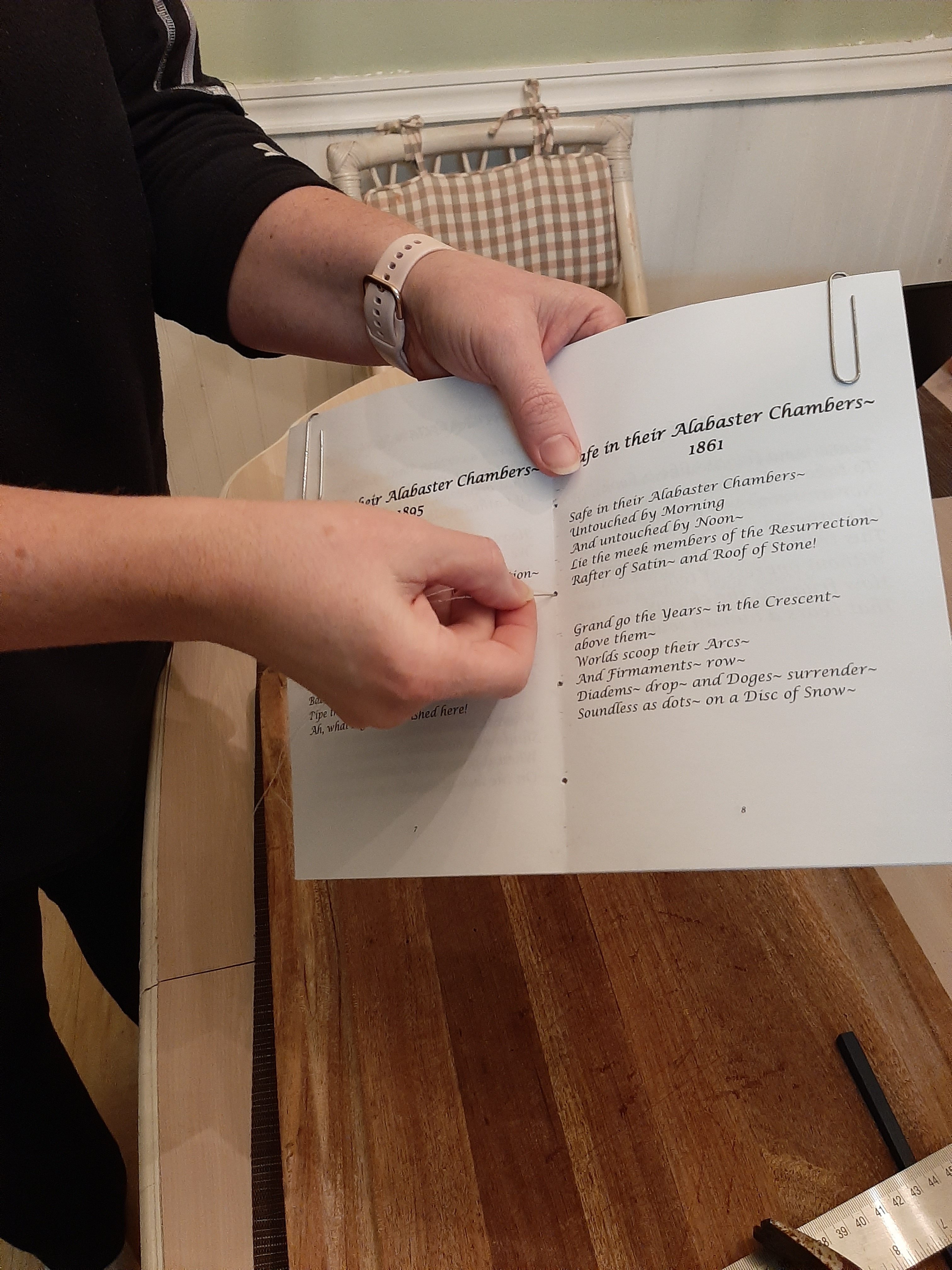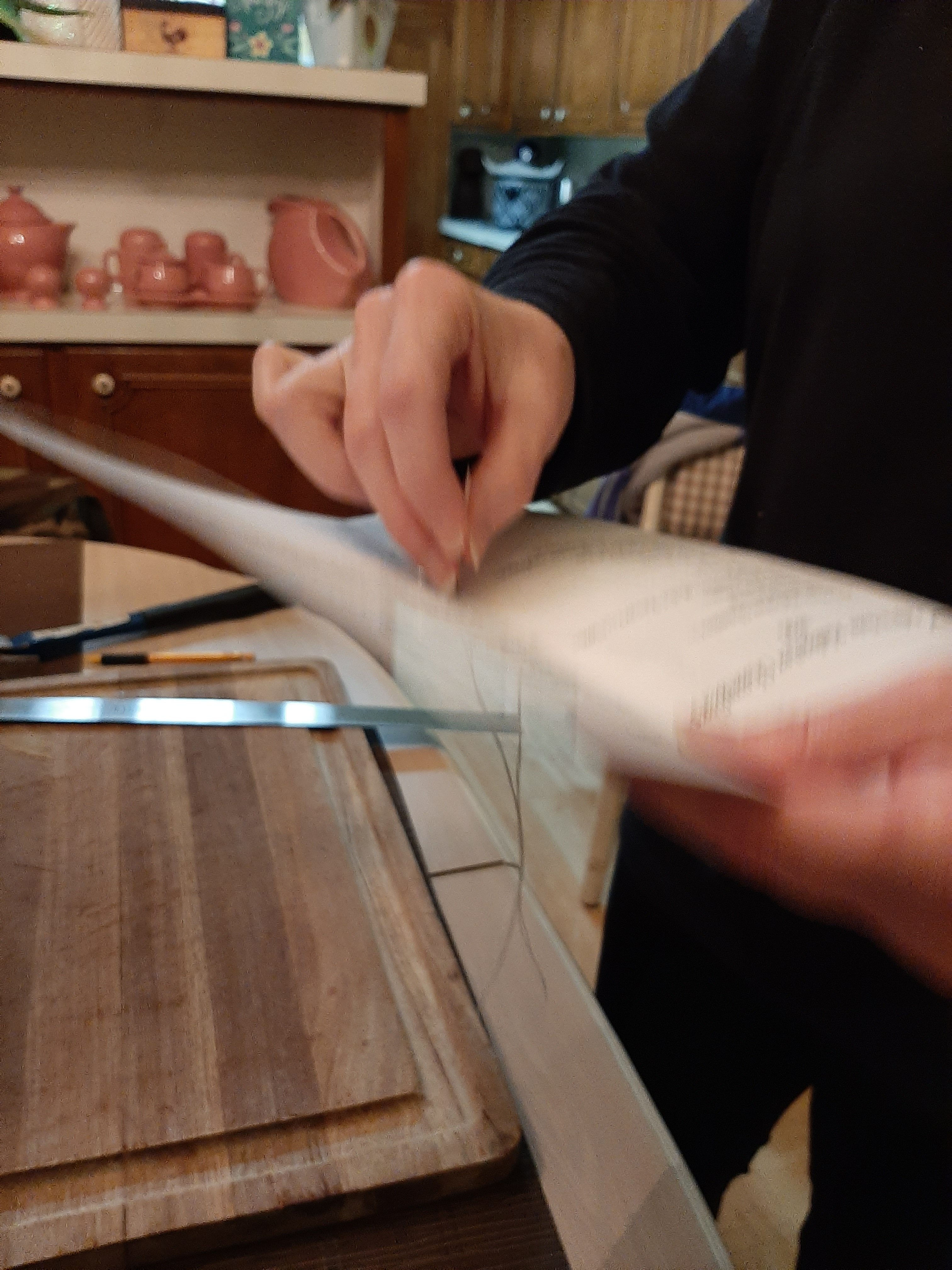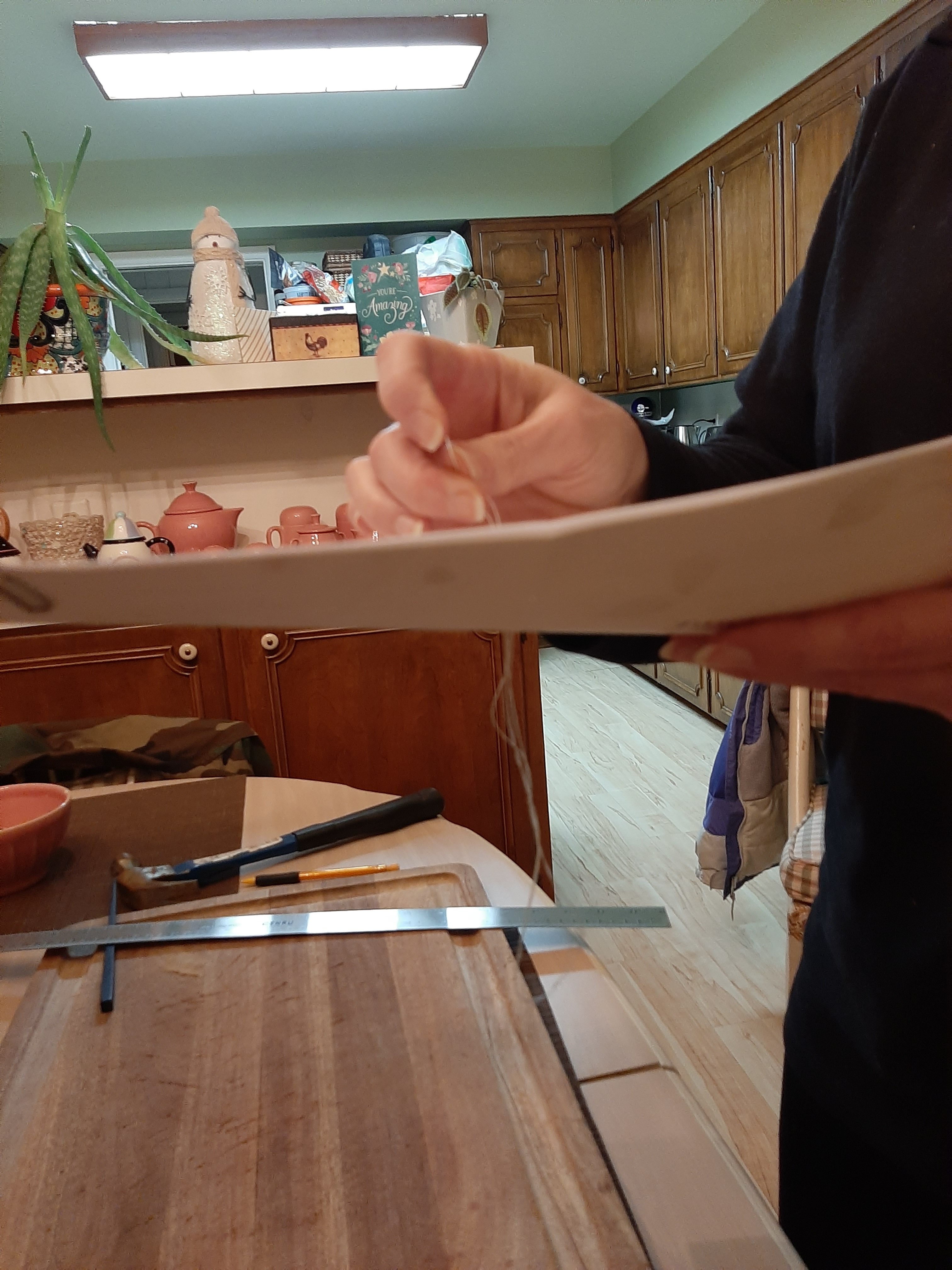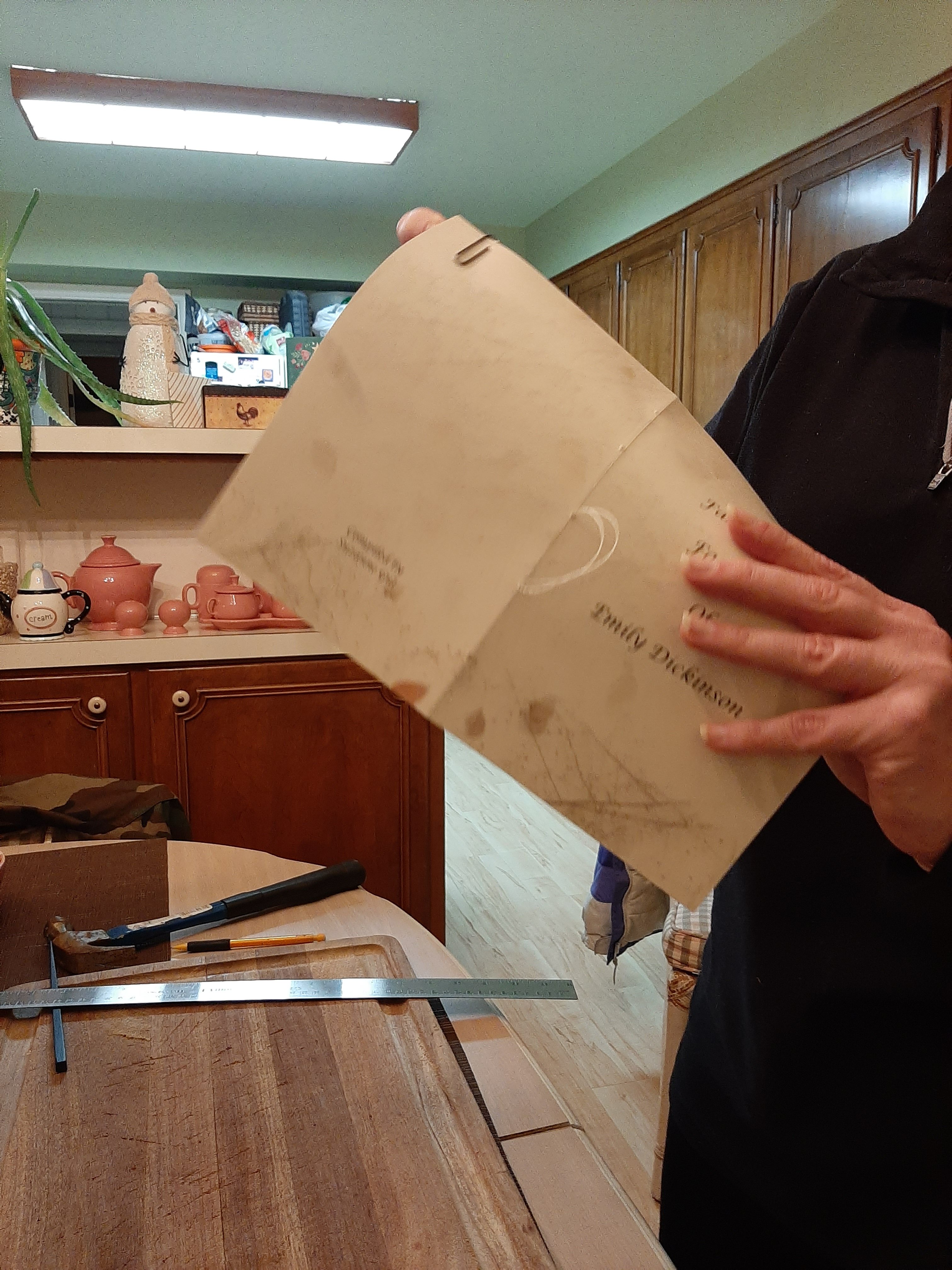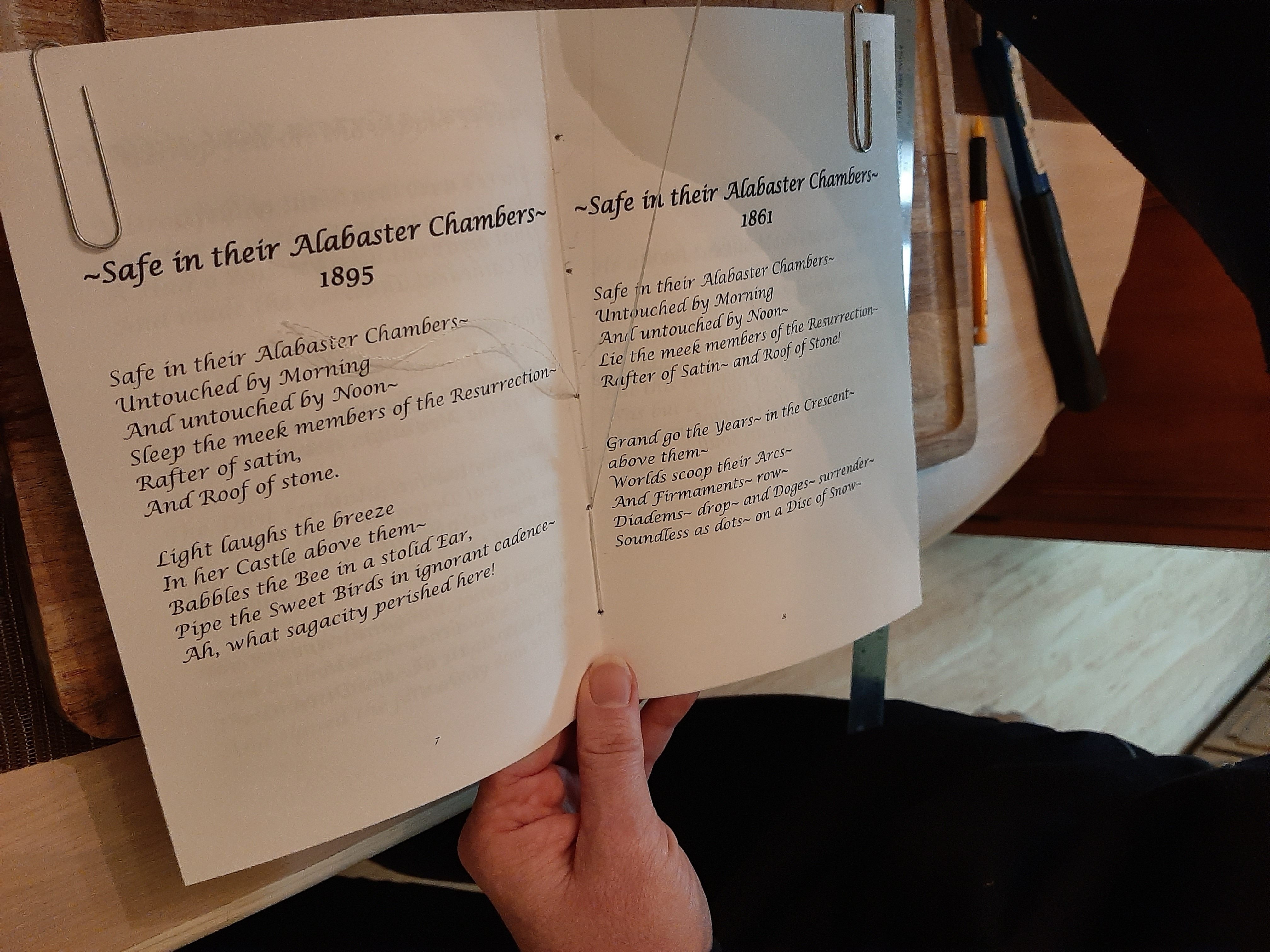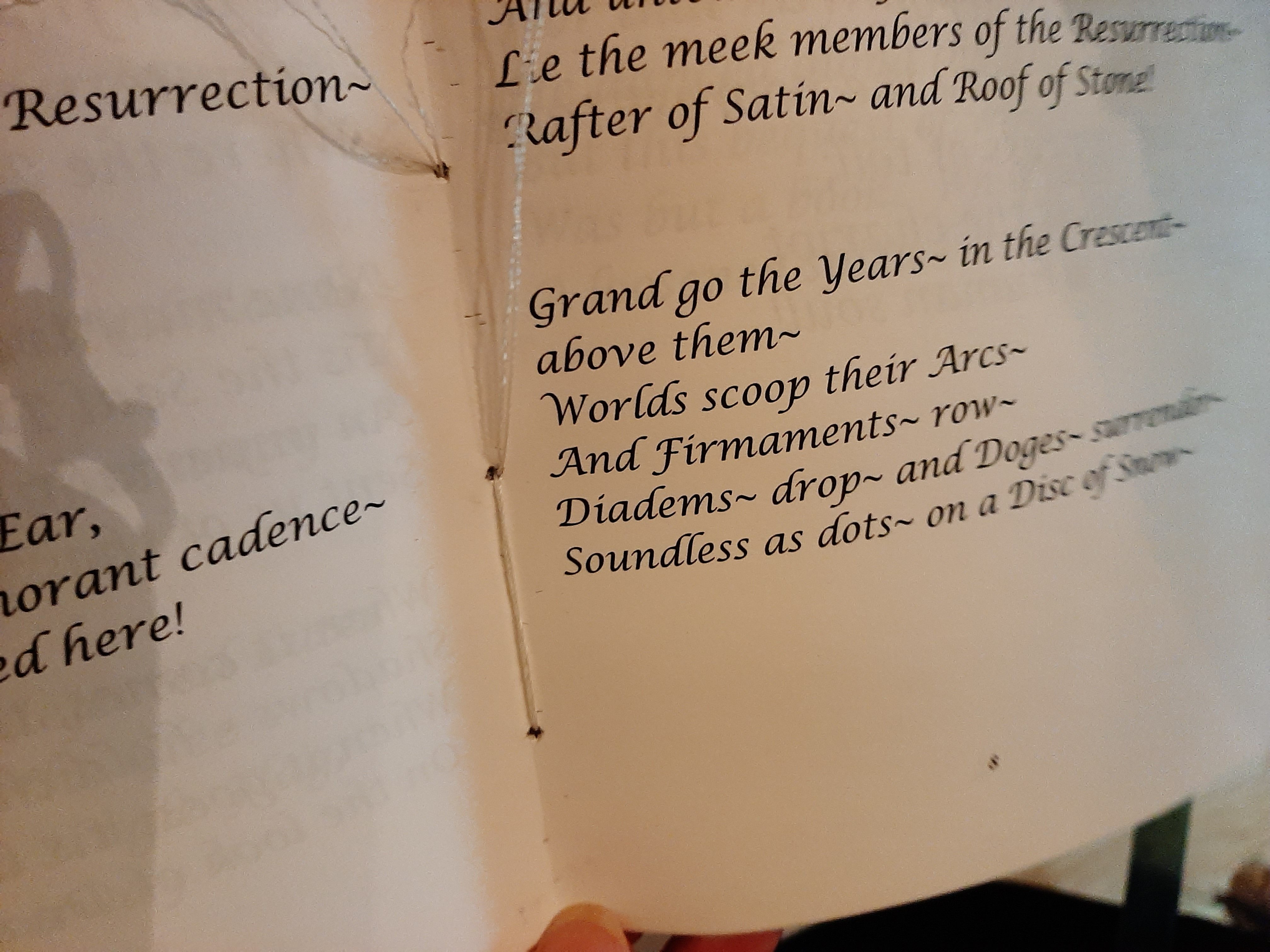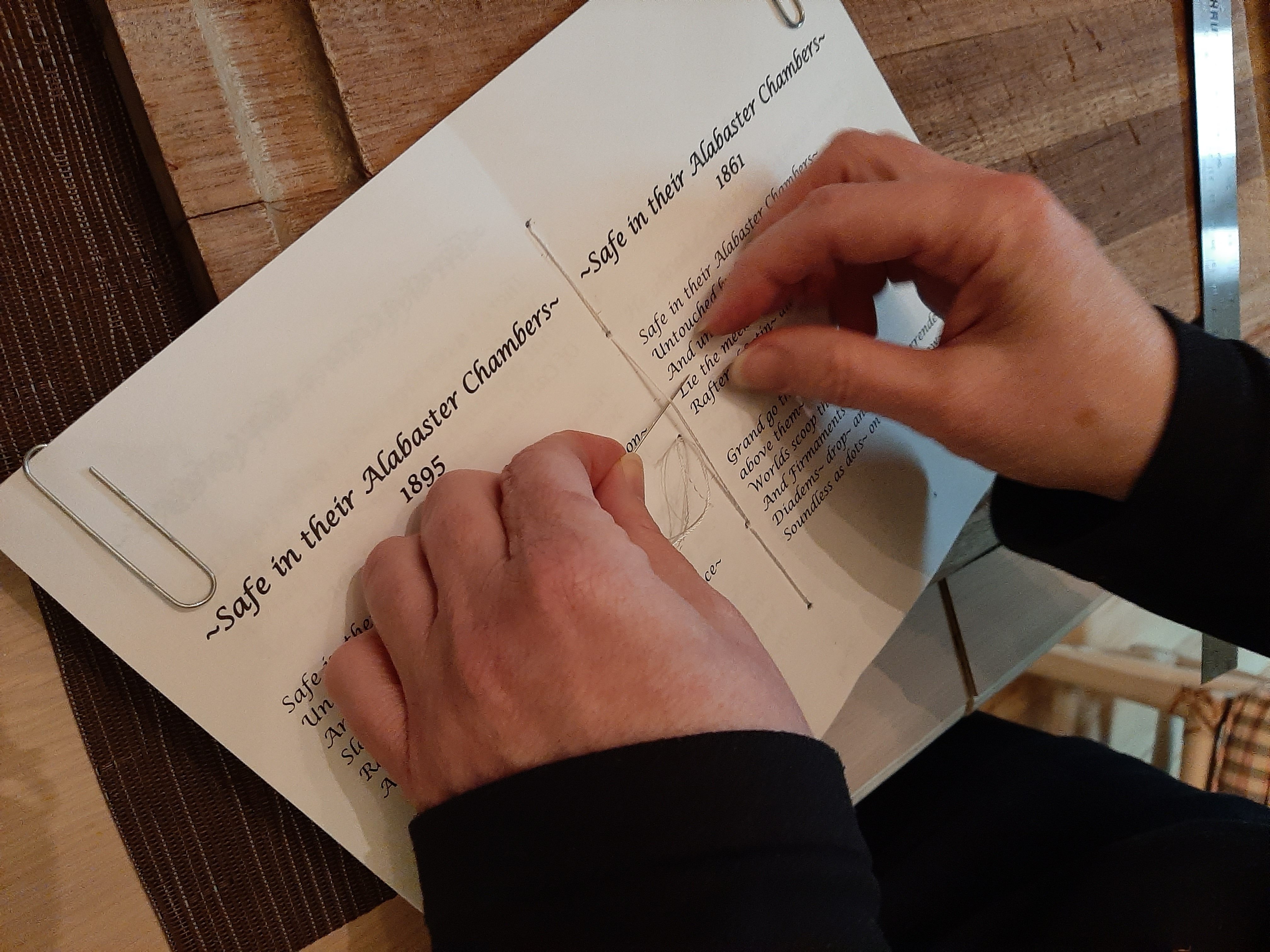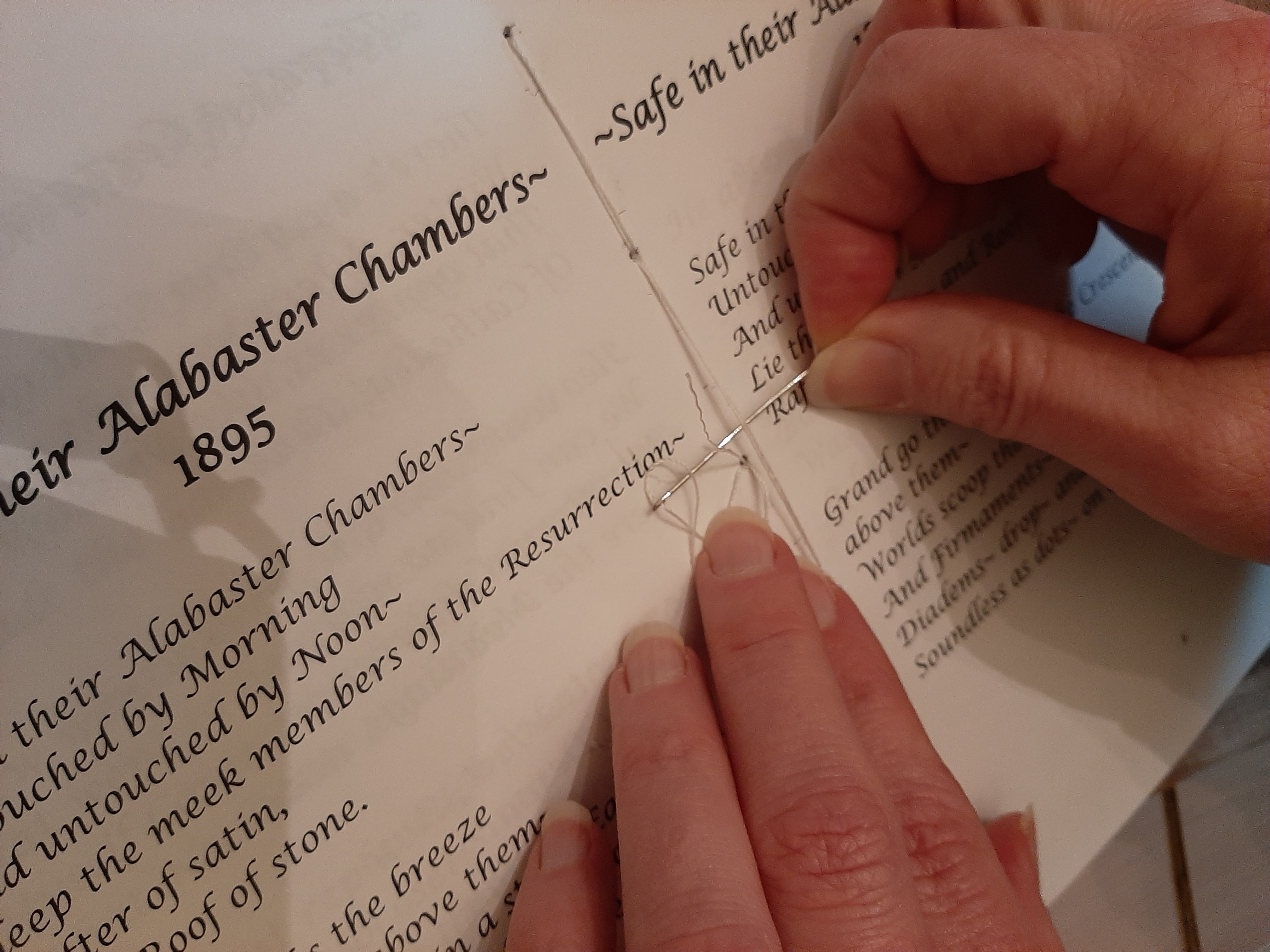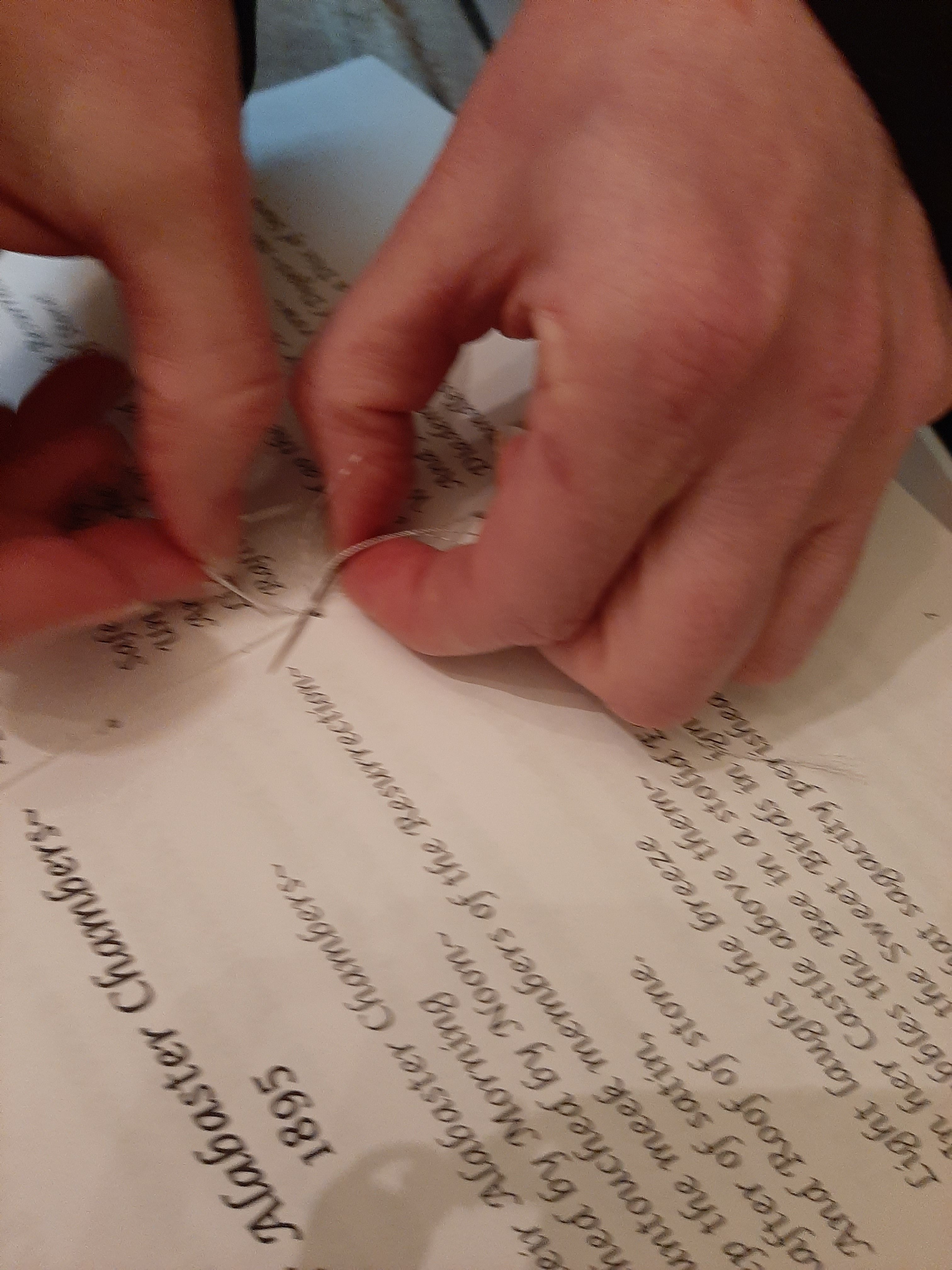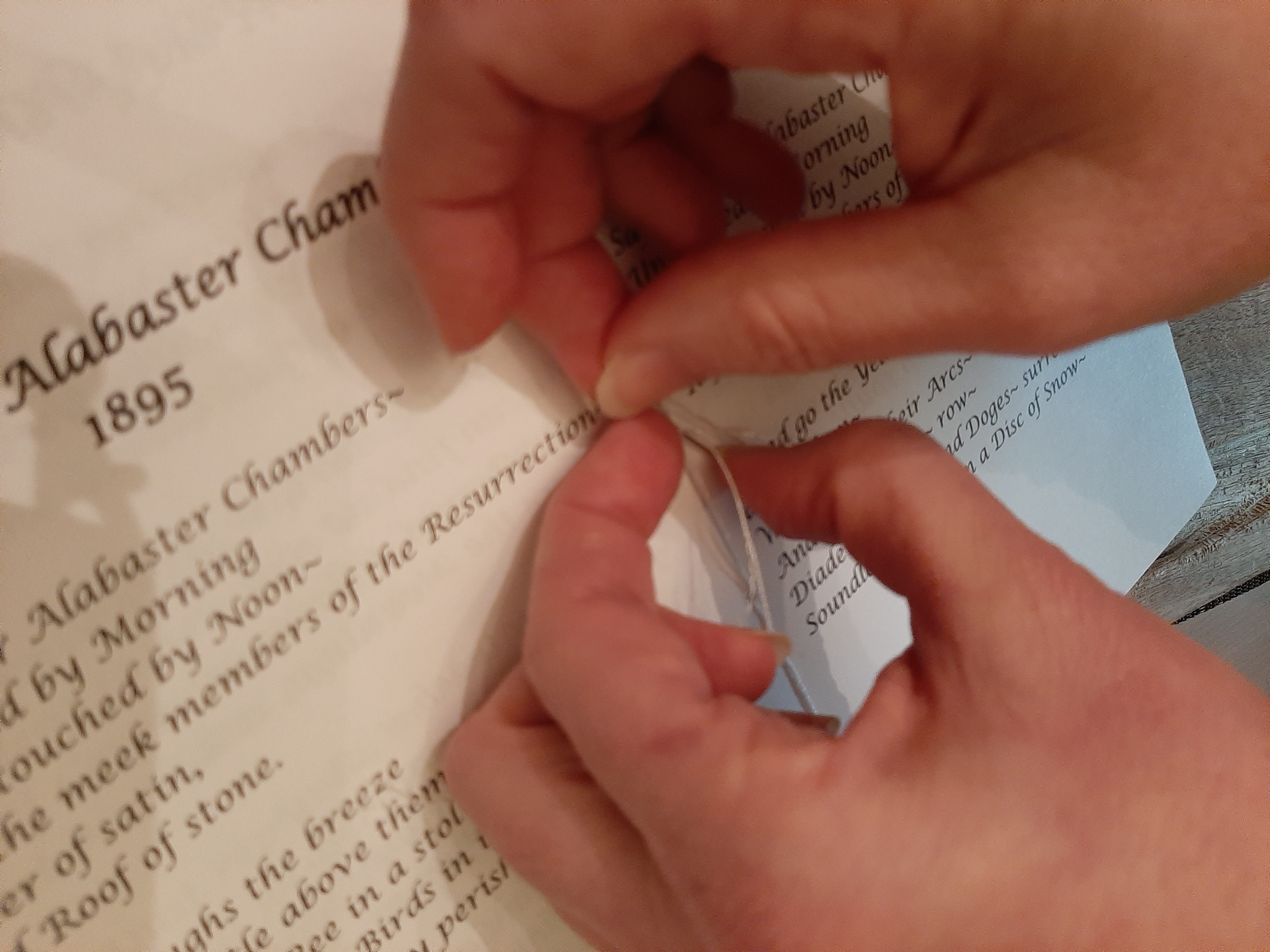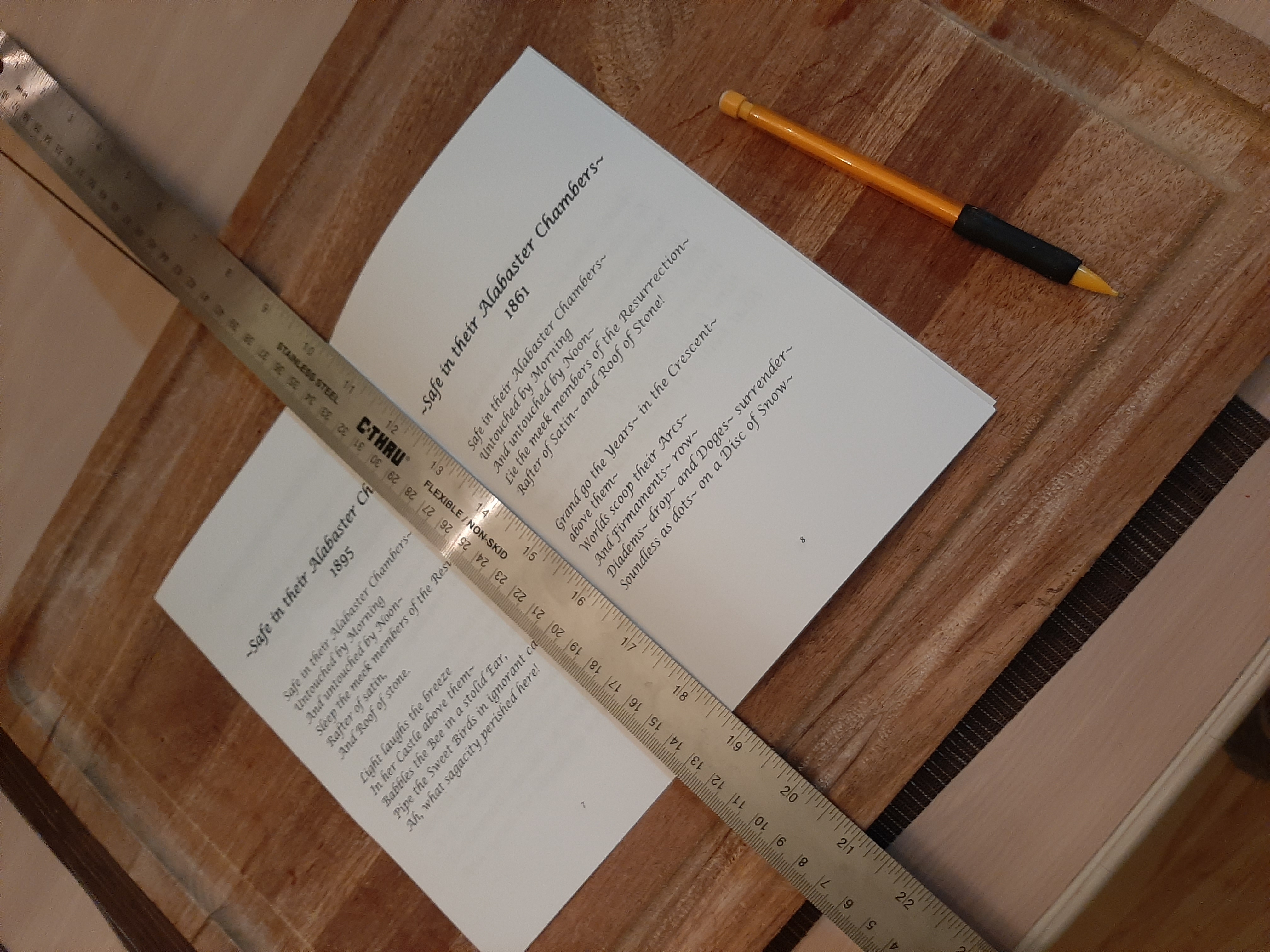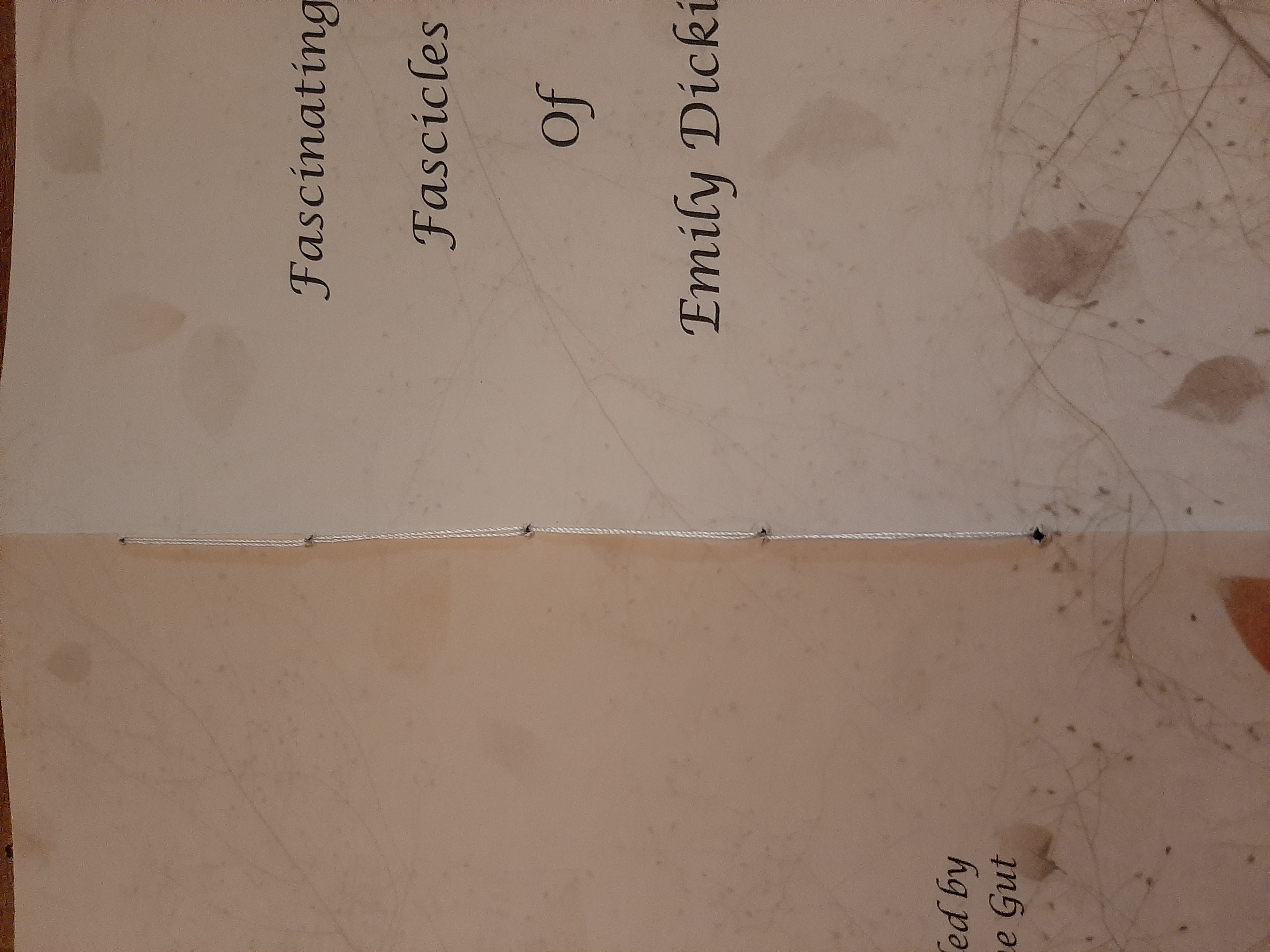Fascinating- I chose this TP. I don’t consider myself a poet, poetry is not my favorite form of literature, and Emily Dickinson’s work has never done much for me, so I had my doubts. However, the more I researched bookbinding and fascicle making, the more intrigued I became. I had no idea how rich of a history bookbinding had and what it entailed. Honestly, not many of us think about the binding of a book; I know I didn’t. But, there is simplicity, sophistication, and craft to this art. The chosen poems on the pages, the carefully pierced holes, the type of thread, and the style of stitch are all woven (literally) together into one graceful product. For poems that show both the harsh of life and calm of nature, the fascicle seems the perfect fit. It also seems an appropriate fit for its maker and author, Dickinson.
Walking the group through the process of stitching the booklets together and making one myself gave me a good exercise in “deconstructing words and pages.” I appreciated watching the loose pages of poetry come together to form something that looked and functioned like it was supposed to, like a book. The binding stitch is easily made even though it seems intricate and makes the delicate floss or thread stronger, which is an interesting concept. It brought this interface into sharper view for me. While I was preparing my presentation, a biologist friend was visiting and was fascinated by this TP. She had heard of fascicles in anatomy connecting bones but not in literature. She was mesmerized by the process I was going through and by the end of the “lesson,” she was hooked and ready to learn more. Dickinson and I have created a convert!




